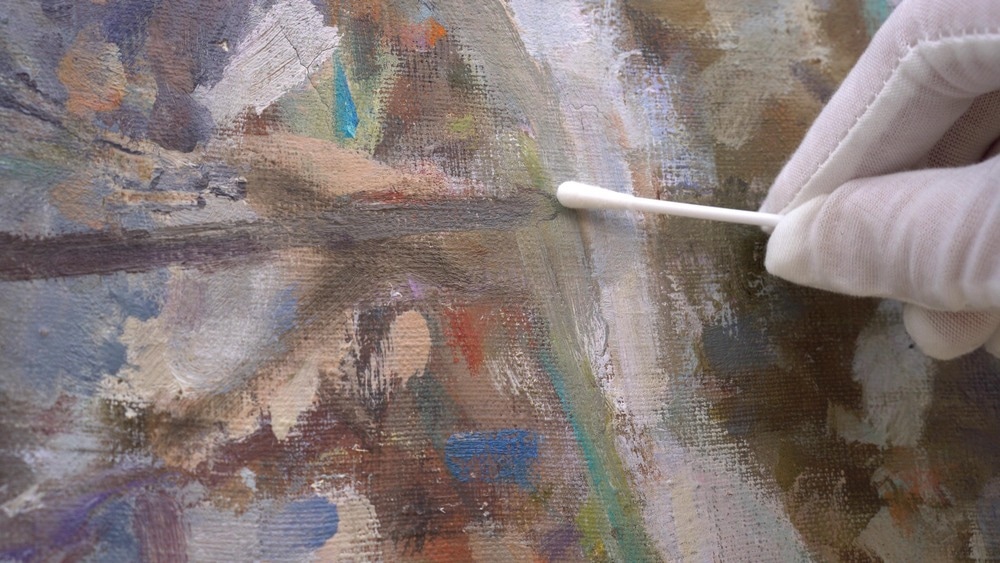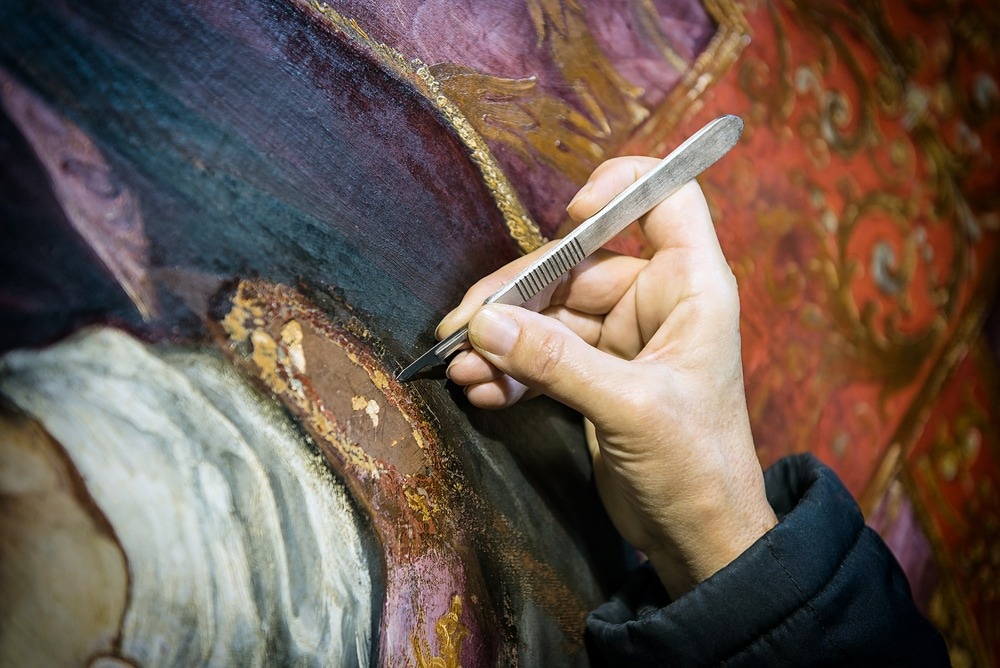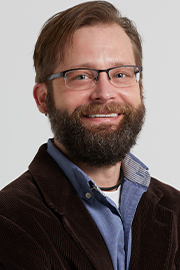In this interview conducted at Pittcon 2023 in Philadelphia, Pennsylvania, we spoke with Dr. Gregory Smith, Conservation Scientist at the Indianapolis Museum of Art, about the scientific analysis and conservation of art.
Could you please introduce yourself and your current research activities?
My name is Greg Smith. I am the Otto N. Frenzel III Senior Conservation Scientist at the Indianapolis Museum of Art at Newfields. I work in cultural heritage and chemistry, authenticating, studying, and helping preserve artwork.
What first attracted you to this field?
As an undergraduate, I went to a small liberal arts school in Kentucky, Centre College, to be a chemist. I took a general education requirement course in cultural anthropology. At the time, I probably had no idea what those words meant, but two weeks in, I was hooked. I knew that whatever I did in chemistry, there would have to be a cultural aspect.
Art Under the Microscope: Analyzing Historical Paintings
Could you define what conservation science is and its role in cultural heritage?
Cultural heritage chemists, or conservation scientists, use chemistry and physics tools to study artwork materials. This information is used to interpret the artwork, understand it better, or preserve it long-term.

Image Credit: Fevziie/Shutterstock.com
What analytical techniques are usually used to uncover the secrets of art and art history?
My laboratory at the museum would be familiar to anybody who has been in a university laboratory. We use various analytical techniques, such as molecular and elemental spectroscopy, chromatography in the gas and liquid phases, and microscopy using light and electrons. We also use many more esoteric techniques like thermal analyses and accelerated aging instruments.
Why is it so important to understand the chemical degradation of an artist's materials, and how can it help to improve our understanding of cultural heritage?
If your goal is the long-term preservation of the artwork or cultural heritage, and you do not understand its weaknesses and what will lead to its degradation, you will not be able to stop it.
For instance, if we are worried about fading dyes, we would try to understand that mechanism to determine if it is photooxidation. If so, we may use anoxia to preserve a watercolor print in its frame.
Although they appear to be superficially separate, what is the scientific overlap between art analysis and crime scene investigations?
They seem like disparate fields. You have scientists who are solving crime and scientists who are trying to preserve artwork, but they do have a lot of overlap.
It begins with the scientists themselves. We share an investigative mindset and a very similar tool set. The samples are also similar - often small, precious, and irreplaceable. Also, anything can end up at a crime scene; similarly, anything can end up in an art museum.
What advantages does a forensic approach give to cultural heritage at present?
There is a forensic principle that when a criminal is committing a crime, they leave traces that can be read if you can detect them. This same mindset applies in our field.
If we think about the history of an artwork, how it has changed, or how it was made, each leaves some trace. If we can figure out how to analyze or detect these, we will understand something about this artwork's history, condition, and craftmanship.
On the topic of art connoisseurship, how have you seen this evolve?
Many connoisseurs rely on their eyes or their hands to 'read' an artwork to understand it. But with the advent of cultural heritage chemistry as a field, there are now so many more tools that can be used to visualize artwork, maybe outside of the visible range using infrared or X-rays.
The Interplay Between Conservation Science and Art - Gregory Smith at Pittcon 2023
Video Credit: Pittcon
Materials characterization techniques can also provide information you simply cannot get from your eyes or hands. It is revolutionary in that sense.
Could you discuss a little bit about the different roles that science can play in arts?
Consider the interface between art and science. For instance, scientists who create new art materials; these are the formulators that might work for paint or pigment companies. There are people like us that analyze or authenticate artwork that might end up in museum collections, as well as conservators who restore and treat the artwork and are also trained as scientists.
The most fundamental level is that there is a science that occurs in the actual creation of the artwork. If you think of the patination of a bronze sculpture, that is all corrosion chemistry happening.
What are the main challenges in the field of cultural heritage?
Many challenges are shared in the more mainstream sciences, including funding, particularly for a very applied field like mine, and big data sets.
Many of our techniques, which used to require discreet, point-and-shoot spectroscopic sampling, are now 2D imaging techniques. You may walk away and, in the morning, come back to hundreds of thousands of spectra. How do we deal with those extensive data sets to tease out the information we are interested in?
As our world becomes smaller and we travel, not all artwork can come to the lab. We have to take the lab to the artwork. Miniaturization and portability of instruments allow me to work in our art nature park behind the museum, or it may allow me to travel to Egypt and be part of an excavation working in a tomb.

Image Credit: Francesco Cantone/Shutterstock.com
What has been the most poignant piece of art or artifact that you have worked on during your career and why?
I have been very fortunate to work on some spectacular artwork, such as Van Gogh, Rembrandt, and Gauguin. It would be straightforward to say one of these because it certainly raises the hair on the back of your neck when you are peering down a microscope at a Van Gogh, but at the same time, we may be working with a freshly excavated ceramic pot. Here, you are holding something that a human hand has not touched for 2,000 years, which can also be a pretty special event.
What are you working on right now that you are especially excited about?
We have worked on emissive pigments, such as Dayglo and bright neon pigments for the last few years. We have been studying their compositions and thinking about them in terms of exhibition.
We have just opened a show at our museum of Stephen Sprouse, who was a designer from Indiana, part of the punk rock generation. In the eighties and nineties, he used a lot of neon and glow-in-the-dark colors. We need to understand these pieces before we put them on exhibition to know what changes to expect as a result of that.
What are you most looking forward to about Pittcon in San Diego?
The show is always about being on the floor and looking at the latest innovations. We have to replace infrared and Raman spectrometers, so I want to look at new developments in those instruments that debuted at the show.
Pittcon was placed on pause for an in-person event for two years. But why is it so important for individuals to come to these in-person events? What benefits can they gain?
If you consider the exposition floor, you do not get the opportunity to kick the tires on that many instruments in one go unless you are at an in-person event like this, and it is a chance to meet up with colleagues. In the symposium I spoke at, I had friends I had not seen for five or six years because they live in Australia. An in-person meeting is an excellent opportunity to do that.
About Dr. Gregory Smith
 Gregory Dale Smith received a B.S. degree from Centre College of Kentucky in anthropology/sociology and chemistry before pursuing graduate studies at Duke University in time-domain vibrational spectroscopy and archaeological fieldwork. His postgraduate training included investigations of pigment degradation processes and palette studies of illuminated manuscripts at the British Library and the V & A Museum, development of synchrotron infrared microscopy facilities at the National Synchrotron Light Source at Brookhaven, and researching cleaning issues related to artists’ acrylic emulsion paints at the National Gallery of Art. In 2004, Dr. Smith joined the faculty of the conservation training program at Buffalo State College as the Andrew W. Mellon Assistant Professor of Conservation Science.
Gregory Dale Smith received a B.S. degree from Centre College of Kentucky in anthropology/sociology and chemistry before pursuing graduate studies at Duke University in time-domain vibrational spectroscopy and archaeological fieldwork. His postgraduate training included investigations of pigment degradation processes and palette studies of illuminated manuscripts at the British Library and the V & A Museum, development of synchrotron infrared microscopy facilities at the National Synchrotron Light Source at Brookhaven, and researching cleaning issues related to artists’ acrylic emulsion paints at the National Gallery of Art. In 2004, Dr. Smith joined the faculty of the conservation training program at Buffalo State College as the Andrew W. Mellon Assistant Professor of Conservation Science.
In 2010 Dr. Smith was hired as the senior conservation scientist at the Indianapolis Museum of Art at Newfields where he has constructed a state-of-the-art research facility to study and preserve the museum’s encyclopedic collection of nearly 56,000 works of art. His research interests include studying pollution off-gassing from museum construction materials, determining the mechanisms of pigment degradation processes, and introducing cultural heritage chemistry into the undergraduate curriculum.

This information has been sourced, reviewed and adapted from materials provided by Pittcon.
For more information on this source, please visit Pittcon.
Disclaimer: The views expressed here are those of the interviewee and do not necessarily represent the views of AZoM.com Limited (T/A) AZoNetwork, the owner and operator of this website. This disclaimer forms part of the Terms and Conditions of use of this website.